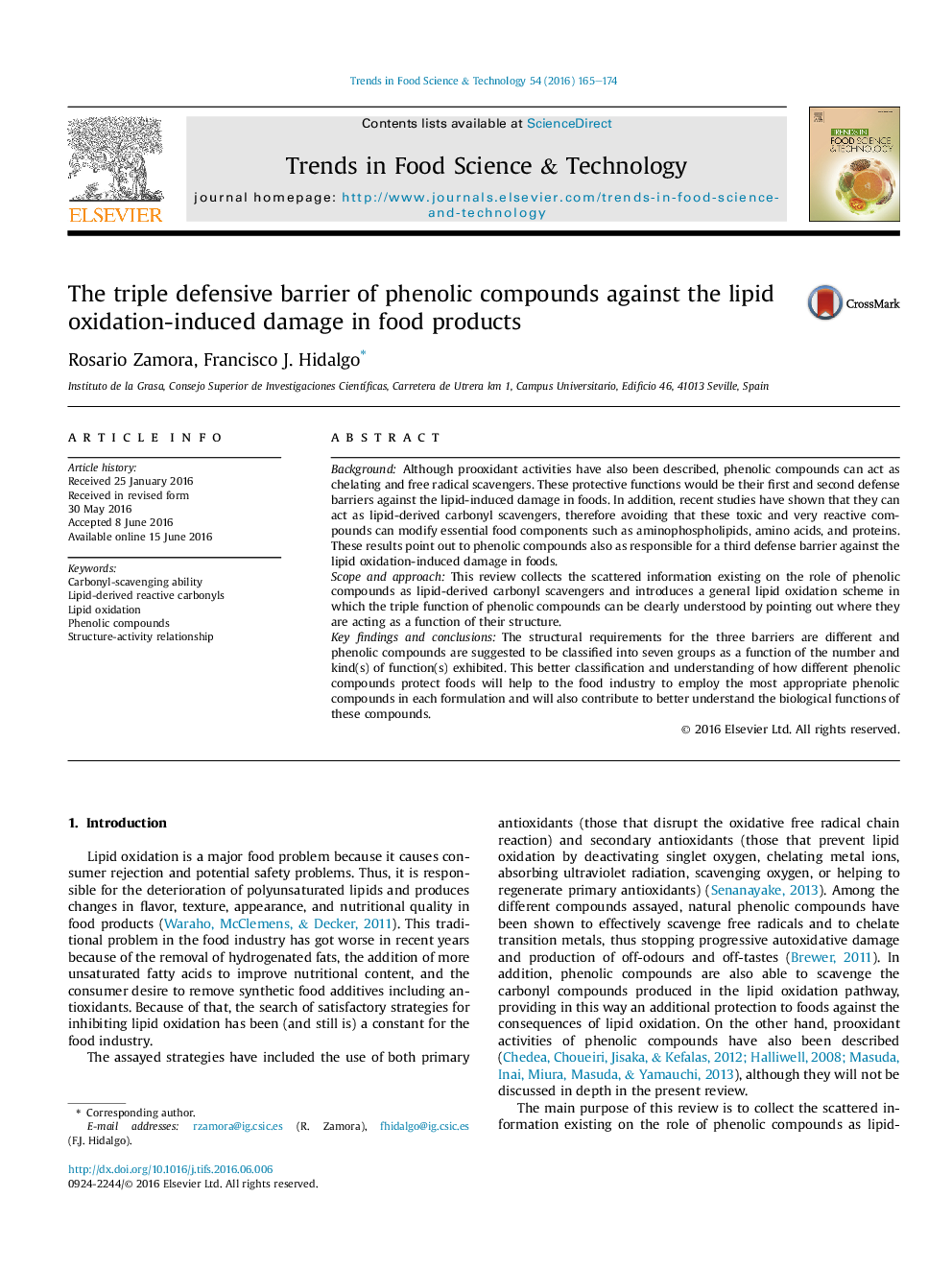| Article ID | Journal | Published Year | Pages | File Type |
|---|---|---|---|---|
| 2098506 | Trends in Food Science & Technology | 2016 | 10 Pages |
•Phenolics can act as chelating, free radical or carbonyl scavengers.•These abilities are a triple barrier against the lipid-oxidation induced damage.•The structural requirements for the three abilities are different.•Each phenolic compound can have one, two, or the three abilities.•Phenolic functions can be better understood according to their ability(s).
BackgroundAlthough prooxidant activities have also been described, phenolic compounds can act as chelating and free radical scavengers. These protective functions would be their first and second defense barriers against the lipid-induced damage in foods. In addition, recent studies have shown that they can act as lipid-derived carbonyl scavengers, therefore avoiding that these toxic and very reactive compounds can modify essential food components such as aminophospholipids, amino acids, and proteins. These results point out to phenolic compounds also as responsible for a third defense barrier against the lipid oxidation-induced damage in foods.Scope and approachThis review collects the scattered information existing on the role of phenolic compounds as lipid-derived carbonyl scavengers and introduces a general lipid oxidation scheme in which the triple function of phenolic compounds can be clearly understood by pointing out where they are acting as a function of their structure.Key findings and conclusionsThe structural requirements for the three barriers are different and phenolic compounds are suggested to be classified into seven groups as a function of the number and kind(s) of function(s) exhibited. This better classification and understanding of how different phenolic compounds protect foods will help to the food industry to employ the most appropriate phenolic compounds in each formulation and will also contribute to better understand the biological functions of these compounds.
